Am having trouble in understanding how FILTER function works in MDX.
Here is my query which gets all the non-empty Internet Order Count values for all Sales Territory Countries across all the Calendar Years.
SELECT
NON EMPTY
{
Filter
(
{[Date].[Calendar].[Calendar Year].MEMBERS}
,
[Measures].[Internet Order Count] > 0
)
} ON COLUMNS
,[Sales Territory].[Sales Territory].[Country].MEMBERS
ON ROWS
FROM [Adventure Works]
WHERE
[Measures].[Internet Order Count];
This gives me all the orders as I am filtering by 0 and the result is as shown below
CY 2010,CY 2011,CY 2012,CY 2013,CY 2014
France, 1 ,140 ,359 ,"1,917",67
Germany, ,175 ,339 ,"1,909",61
United Kingdom ,1 ,175 ,405 ,"2,377",73
Canada, 1 ,170 ,169 ,"2,856",179
United States, 5 ,770 ,867 ,"7,590",335
Australia, 6 ,786 ,"1,130","4,640",156
Am putting in the results in csv format as am having restrictions in uploading image currently. Am new to MDX and my goal is to filter this result set where Internet Order Count is greater than 180.
Hence I now modified the query to this -
SELECT
NON EMPTY
{
Filter
(
{[Date].[Calendar].[Calendar Year].MEMBERS}
,
[Measures].[Internet Order Count] > 180
)
} ON COLUMNS
,[Sales Territory].[Sales Territory].[Country].MEMBERS
ON ROWS
FROM [Adventure Works]
WHERE
[Measures].[Internet Order Count];
This one gave me the below output -
CY 2011,CY 2012,CY 2013,CY 2014
France, 140 ,359 ,"1,917",67
Germany, 175 ,339 ,"1,909",61
United Kingdom ,175 ,405 ,"2,377",73
Canada, 170 ,169 ,"2,856",179
United States, 770 ,867 ,"7,590",335
Australia, 786 ,"1,130","4,640",156
Basically CY 2010 entries are filtered out whereas what I am expecting is not to have entry/blank values of (France,CY 2011),(Germany, CY 2011),(UK, CY 2011), (Canada, CY 2011) etc. and of course similarily for some entries belonging to CY 2014 with similar result.
I am using AdventureWorksDW2014 cube. How would I go about doing this?

